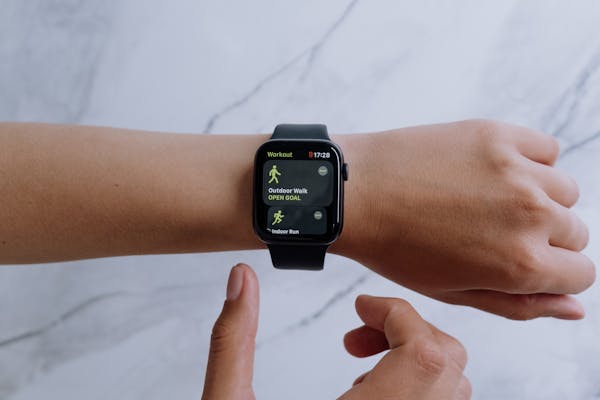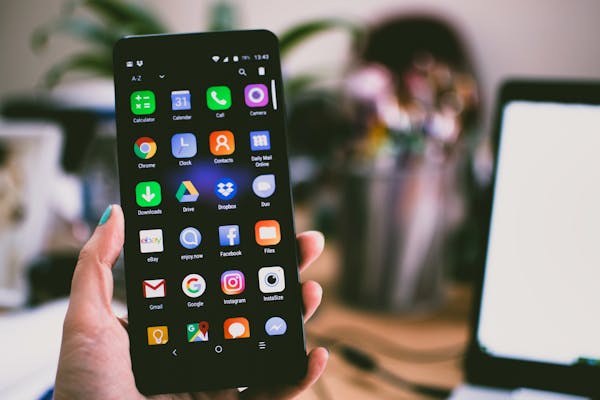
Technology has become an integral part of our daily lives, transforming the way we live, work, and interact with the world around us. The continuous advancements in technology have brought about significant changes in various aspects of our lives, making things easier, faster, and more efficient. In this article, we will explore how technology improves our lives across different domains, including communication, healthcare, education, transportation, and entertainment.
List of How Technology Improves Our Lives
1. Communication
One of the most noticeable improvements technology has brought to our lives is in the realm of communication. Gone are the days when sending a message took days or even weeks. Today, we can communicate with anyone, anywhere in the world, instantly.
Instant Messaging and Social Media
Platforms like WhatsApp, Facebook, Twitter, and Instagram have revolutionized the way we stay in touch with friends and family. Instant messaging allows us to send texts, images, and videos within seconds. Social media platforms enable us to share our lives and stay updated on the lives of others, fostering a sense of connection despite geographical distances.
Video Conferencing
Video conferencing tools like Zoom, Skype, and Google Meet have transformed the way we conduct meetings and socialize. They have become indispensable, especially during the COVID-19 pandemic, allowing people to work from home and stay connected with loved ones. These tools also enable remote education, making learning accessible to students worldwide.
Enhanced Business Communication
In the business world, technology has improved communication through tools like Slack, Microsoft Teams, and project management software. These tools streamline collaboration, improve productivity, and facilitate efficient information sharing, contributing to better decision-making and problem-solving.
2. Healthcare

The healthcare industry has seen remarkable advancements due to technology, significantly improving patient care and outcomes.
Telemedicine
Telemedicine has made healthcare more accessible, especially for those in remote or underserved areas. Patients can consult with doctors via video calls, receive diagnoses, and even get prescriptions without leaving their homes. This has not only improved convenience but also reduced the burden on healthcare facilities.
Medical Devices and Wearables
Innovative medical devices and wearables have revolutionized patient monitoring and disease management. Devices like smartwatches and fitness trackers can monitor vital signs, track physical activity, and even detect irregular heartbeats. These technologies empower individuals to take charge of their health and provide doctors with valuable data for better diagnosis and treatment.
Advanced Diagnostic Tools
Technological advancements have led to the development of sophisticated diagnostic tools, such as MRI machines, CT scanners, and robotic surgical systems. These tools enhance the accuracy of diagnoses, reduce the risk of complications, and enable minimally invasive procedures, leading to faster recovery times.
Electronic Health Records (EHRs)
Electronic Health Records (EHRs) have replaced paper-based records, improving the efficiency and accuracy of patient information management. EHRs allow healthcare providers to access a patient’s medical history, track treatments, and share information seamlessly, leading to better-coordinated care.
3. Education
Technology has transformed education, making learning more accessible, interactive, and engaging.
Online Learning Platforms
Online learning platforms like Coursera, Khan Academy, and Udemy have democratized education, allowing anyone with an internet connection to access high-quality courses on a wide range of subjects. These platforms offer flexibility, enabling learners to study at their own pace and convenience.
Interactive Learning Tools
Technology has introduced interactive learning tools, such as virtual labs, simulations, and educational games, that make learning more engaging and effective. These tools cater to different learning styles, helping students grasp complex concepts more easily.
Collaborative Learning
Tools like Google Classroom, Microsoft Teams, and collaborative software enable students and teachers to collaborate on projects, share resources, and communicate in real-time. This fosters a sense of community and enhances the learning experience.
Personalized Learning
Adaptive learning technologies use data and algorithms to personalize the learning experience for each student. These systems identify strengths and weaknesses, tailor content to individual needs, and provide targeted feedback, ensuring that every student can learn at their own pace and achieve their full potential.
4. Transportation
Advancements in technology have revolutionized the transportation industry, making travel safer, faster, and more efficient.
Electric and Autonomous Vehicles
Electric vehicles (EVs) and autonomous vehicles (AVs) are transforming the way we travel. EVs reduce our reliance on fossil fuels and lower carbon emissions, contributing to a cleaner environment. AVs, equipped with advanced sensors and AI, promise to reduce accidents caused by human error, enhance road safety, and provide mobility solutions for those unable to drive.
Ride-Sharing and Mobility Services
Ride-sharing platforms like Uber and Lyft have made transportation more convenient and accessible. These services offer affordable and flexible travel options, reducing the need for car ownership and easing traffic congestion. Additionally, bike-sharing and electric scooter services provide eco-friendly alternatives for short-distance travel.
Smart Transportation Systems
Smart transportation systems leverage IoT, AI, and data analytics to optimize traffic flow, reduce congestion, and improve public transportation efficiency. Real-time traffic monitoring, smart traffic lights, and predictive maintenance of infrastructure enhance the overall travel experience.
High-Speed Rail and Hyperloop
High-speed rail systems and futuristic concepts like the Hyperloop promise to revolutionize long-distance travel. These technologies aim to reduce travel time between cities, offering faster and more sustainable alternatives to traditional air and road travel.
5. Entertainment
The entertainment industry has undergone a significant transformation due to technological advancements, offering more immersive and personalized experiences.
Streaming Services
Streaming services like Netflix, Amazon Prime, and Disney+ have changed the way we consume media. These platforms offer vast libraries of movies, TV shows, and documentaries, allowing us to watch content on-demand. Personalized recommendations and high-quality streaming have enhanced the viewing experience.
Virtual Reality (VR) and Augmented Reality (AR)
VR and AR technologies have introduced new dimensions to entertainment. VR provides immersive experiences in gaming, virtual tours, and simulations, while AR enhances real-world experiences by overlaying digital information. These technologies are being used in various industries, from gaming and education to healthcare and retail.
Gaming
The gaming industry has benefited immensely from technological advancements. High-definition graphics, realistic simulations, and online multiplayer capabilities have made gaming more engaging and social. The rise of esports has turned gaming into a competitive and lucrative industry.
Music and Art
Technology has democratized music and art creation and distribution. Digital tools and platforms enable artists to create, share, and monetize their work without the need for traditional intermediaries. Streaming services and social media platforms allow artists to reach global audiences and build communities around their work.
6. Smart Homes and IoT

The Internet of Things (IoT) has introduced the concept of smart homes, where devices are interconnected and can communicate with each other, enhancing convenience, security, and energy efficiency.
Home Automation
Smart home devices like Amazon Echo, Google Nest, and smart thermostats allow homeowners to control lighting, heating, security systems, and appliances remotely. Home automation enhances comfort and convenience, allowing users to create personalized environments and automate routine tasks.
Energy Efficiency
Smart devices and sensors can monitor energy usage and optimize it for efficiency. Smart thermostats adjust heating and cooling based on occupancy and preferences, while smart lighting systems can dim or turn off lights when not needed. These technologies contribute to lower energy bills and a reduced carbon footprint.
Security
Smart security systems, including cameras, doorbells, and locks, provide enhanced security and peace of mind. These systems can be monitored and controlled remotely, sending alerts and notifications in case of unusual activity. Advanced features like facial recognition and AI-powered analytics improve the accuracy and effectiveness of these systems.
7. Finance and Banking
Technology has revolutionized the finance and banking industry, making financial services more accessible, efficient, and secure.
Online Banking
Online banking has made managing finances more convenient. Customers can access their accounts, transfer money, pay bills, and apply for loans from the comfort of their homes. Mobile banking apps offer real-time access to account information and financial services, enhancing customer experience.
Digital Payments
Digital payment solutions like PayPal, Venmo, and mobile wallets have transformed the way we make transactions. These platforms offer secure and instant payment options, reducing the reliance on cash and traditional banking methods. Contactless payments and peer-to-peer transfers have become increasingly popular, especially during the pandemic.
Blockchain and Cryptocurrencies
Blockchain technology and cryptocurrencies like Bitcoin and Ethereum are reshaping the financial landscape. Blockchain offers a decentralized and secure way to record transactions, reducing the risk of fraud and improving transparency. Cryptocurrencies provide alternative investment opportunities and facilitate cross-border transactions without intermediaries.
Financial Planning and Investment
Robo-advisors and financial planning apps leverage AI and data analytics to provide personalized investment advice and portfolio management. These tools make financial planning more accessible and affordable, helping individuals achieve their financial goals.
7. Work and Productivity
Technology has transformed the way we work, enhancing productivity, collaboration, and work-life balance.
Remote Work
The rise of remote work has been facilitated by technology, allowing employees to work from anywhere with an internet connection. Video conferencing, collaboration tools, and cloud computing enable seamless communication and access to work resources. Remote work offers flexibility and has become a preferred option for many professionals.
Productivity Tools
A wide range of productivity tools, such as project management software, time tracking apps, and automation tools, have improved efficiency and task management. These tools help individuals and teams stay organized, prioritize tasks, and streamline workflows.
Artificial Intelligence (AI) and Automation
AI and automation are transforming industries by automating repetitive tasks and enhancing decision-making. AI-powered chatbots and virtual assistants handle customer inquiries, while robotic process automation (RPA) streamlines administrative tasks. These technologies free up human resources for more strategic and creative work.
Co-Working Spaces
The concept of co-working spaces has gained popularity, offering flexible and collaborative work environments. These spaces provide infrastructure, networking opportunities, and a sense of community for freelancers, startups, and remote workers.
8. Environmental Impact
Technology has the potential to address some of the most pressing environmental challenges, promoting sustainability and conservation.
Renewable Energy
Advancements in renewable energy technologies, such as solar, wind, and hydropower, are reducing our dependence on fossil fuels. These technologies contribute to cleaner energy production and lower greenhouse gas emissions, mitigating the impact of climate change.
Smart Agriculture
Smart agriculture leverages IoT, AI, and data analytics to optimize farming practices. Precision farming techniques monitor soil conditions, crop health, and weather patterns, enabling farmers to make data-driven decisions. This results in higher crop yields, reduced resource consumption, and sustainable agriculture practices.
Waste Management
Technology is improving waste management through innovations like smart bins, recycling robots, and waste-to-energy solutions. These technologies enhance the efficiency of waste collection, sorting, and recycling, reducing the environmental impact of waste disposal.
Conservation and Wildlife Protection
Technological tools like drones, satellite imagery, and GPS tracking are being used for conservation efforts and wildlife protection. These technologies enable monitoring of endangered species, tracking of illegal activities, and data collection for research and conservation programs.
Conclusion
Technology has profoundly impacted our lives, making them more convenient, efficient, and connected. From improving communication and healthcare to transforming education and transportation, technology continues to shape our world in remarkable ways. As we embrace these advancements, it is essential to consider the ethical and societal implications, ensuring that technology is used to enhance our lives and create a better future for all. The keyword “How does technology improve our life” aptly captures the essence of this transformation, highlighting the myriad ways in which technology enriches and empowers us every day.














